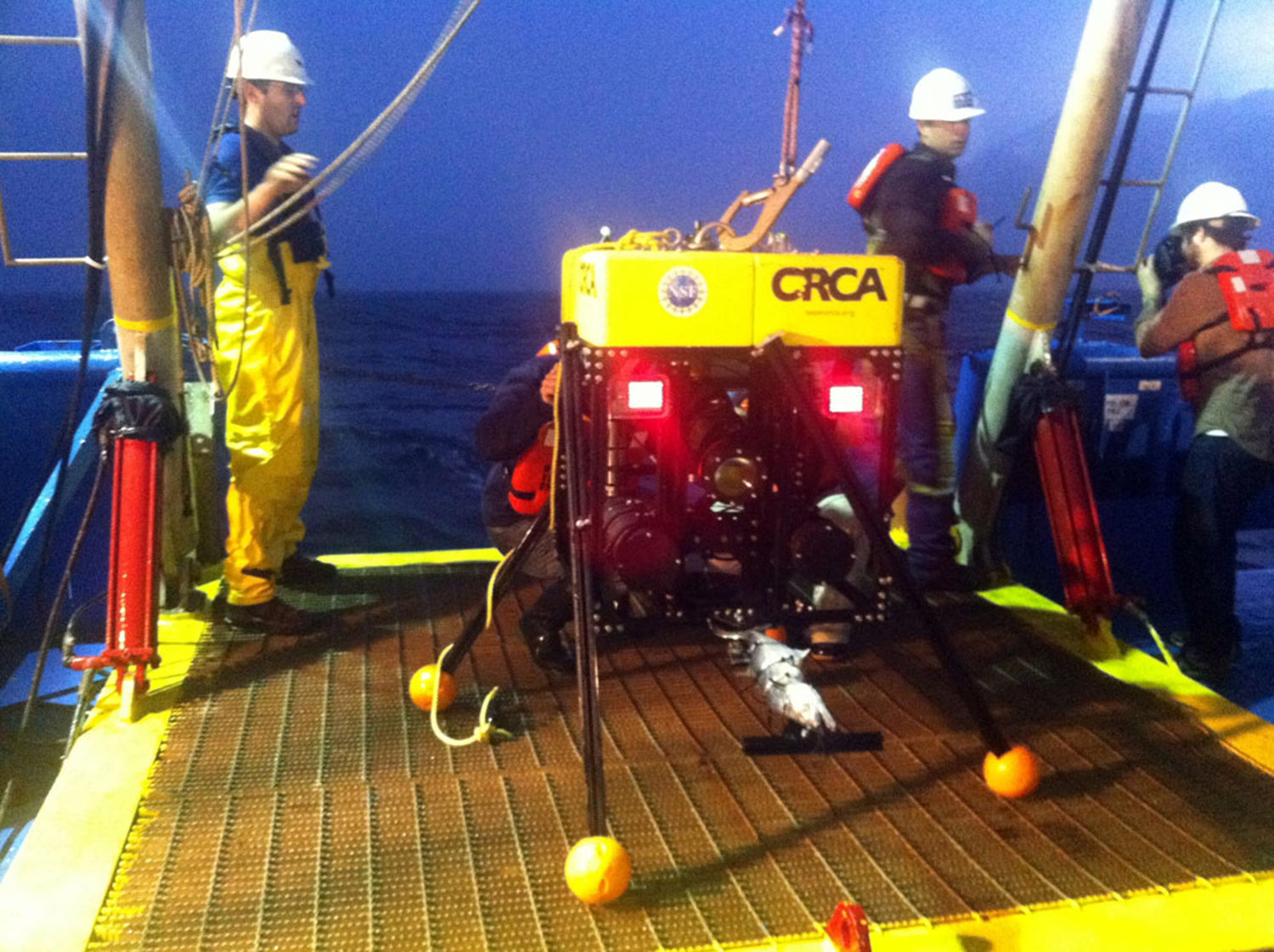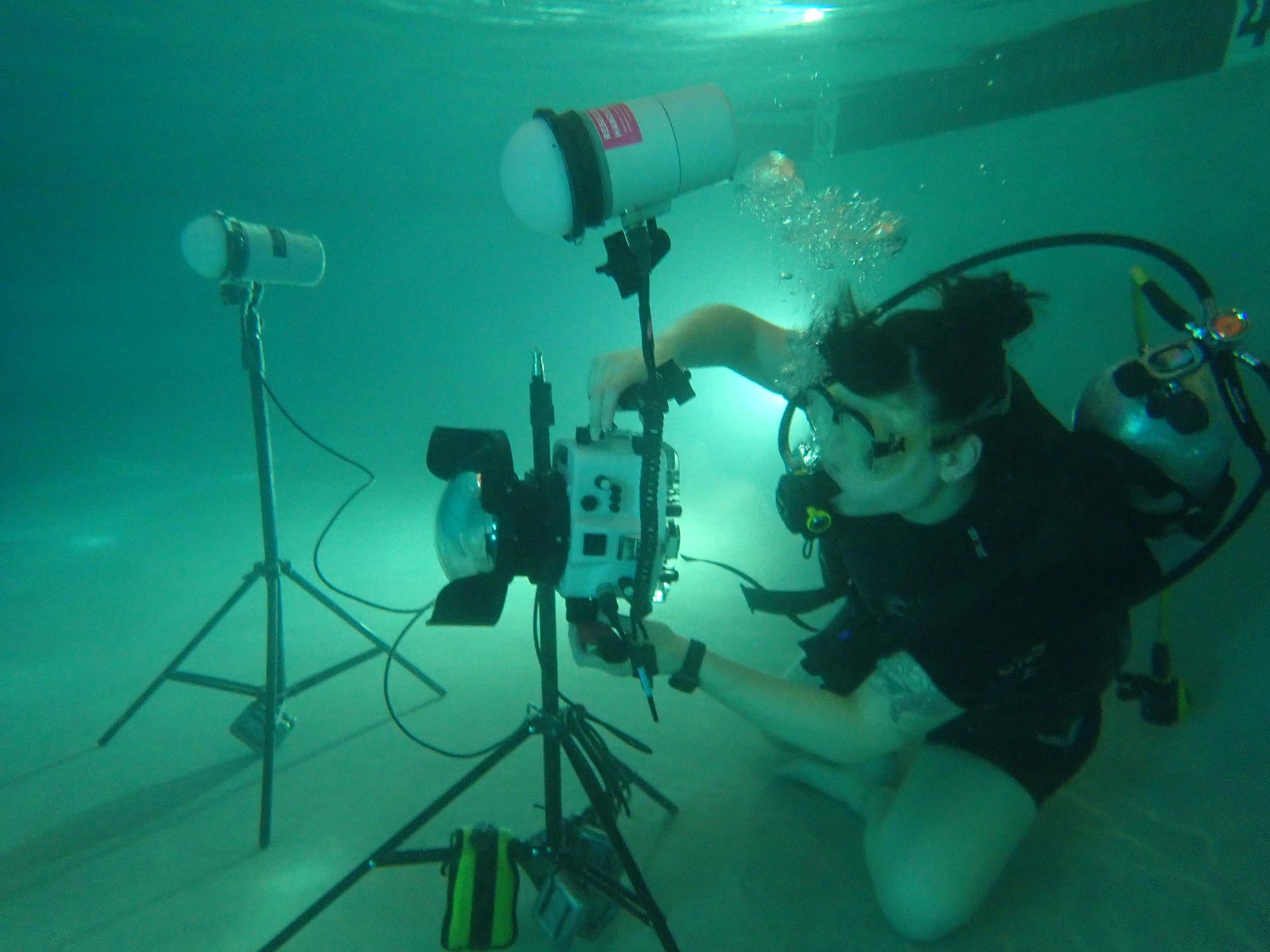By Denise Pietsch
If I'm cooking or watering my garden, chances are I'm also listening to a podcast. A few weeks ago I stumbled upon an episode about bioluminescence called "Glow In the Dark Ocean" featuring marine biologist Dr. Edie Widder. I was excited enough just to learn something new, but by the end of the episode I was completely enthralled by Dr. Widder. Her contributions to marine studies are remarkable and her zest for exploration is contagious, and I caught the bug. After doing some of my own exploration (and a bit of emailing) I was able to connect with Dr. Widder myself, and got the incredible opportunity to interview her.
It's evident by listening to the podcast that Edie has been passionate about oceanography for the majority of her life, so it came as no surprise when she told me she'd decided on marine studies in childhood. "I was 11 years old when I got to explore a coral reef in Fiji and decided I wanted to be a marine biologist." It's rare that a childhood dream becomes an adulthood reality, but Edie is teeming with conviction. This conviction would eventually earn her degrees in biology, biochemistry and a PhD in neurobiology, and a slew of certifications for deep sea submersibles. From there, Edie would go on to found the Ocean Research & Conservation Association (ORCA) where her innovations and many "firsts" would be featured on BBC, National Geographic, and more.

Dr. Edie Widder in the Johnson-Sea-Link submersible. © 2022 Dr. Edie Widder
The Joy of Nature's Mysteries
Vox’s Unexplainable podcast dives into science’s unanswered questions and tries to explain the unexplainable. “Glow In the Dark Ocean” takes listeners on a journey with Edie as she explores not just what bioluminescence is but why it is. It's a journey that has been full of some incredible discoveries. Edie and her team were the first to film a giant squid off the coast of Japan as well as the first to film an "American" giant squid in the Gulf of Mexico. She was also the first person to witness a gulper eel inflate its head like a balloon. Reflecting on witnessing the gulper eel Edie says, "Being able to observe Nature’s mysteries is a source of tremendous joy. It’s a thrill like no other."
One day on a dive in the WASP atmospheric diving suit, Dr. Widder cut the lights on her equipment. The ocean came alive with the light of a thousand bioluminescent creatures. Dr. Widder needed to know why.
“It was so breathtakingly beautiful and so utterly confusing because I knew enough about bioluminescence at this point to know how much energy it takes. Life does not use energy indiscriminately. What was it about all of these light-makers and this light-making capability that was so essential for life? I was hooked, I had to know the answer to that question," (Hassenfeld & Widder, 2022). Thus began her search.
"Being able to observe Nature’s mysteries is a source of tremendous joy. It’s a thrill like no other." - Dr. Edie Widder
Bioluminescence is the emission of light given off by a living organism. While it's a beautiful sight to behold, there's also a lot to learn. Edie explains, "Bioluminescence plays a vital role in the largest living space on the planet. Understanding how it is used is about figuring out the glorious mystery of life on our planet. Bioluminescence research has also proven to have fantastic side-benefits. We have found ways to harness different light chemistries to illuminate the inner workings of cells, report gene activity, track diseases in animal models, and map pollution in ecosystems. There are still multiple chemistries to be described and a multitude of new ways to harness those chemistries [yet] to be invented."

The Eye-in-the-Sea camera developed by Dr. Widder allows scientists to shine a light on underwater creatures without disrupting their natural behavior. © 2022 Dr. Edie Widder
Hiding in Plain Sight
When studying animal behaviors, we learn the most when creatures aren’t aware of our presence. The subjects are able to maintain their status quo uninterrupted. Remaining camouflaged is key to developing our understanding of the behavior behind bioluminescence. In the terrestrial world, researchers study animals by using "blinds," camouflaged concealment devices which hide their cameras from the view of the animals. Marine scientists had yet to develop anything similar until Dr. Widder came along. "Designing illumination that allows you to see without being seen is a critical advancement," says Edie. She created an underwater blind by taking lessons from the exact creatures she was trying to study. "When trying to observe animals unobtrusively, it’s important to know what their eyes can and can’t see."
"We are all explorers. It’s baked into our DNA. Exploring and figuring out how the world works has always been essential to our survival. It still is."
Underwater photographers use strobes to bring out colors from the light spectrum that get lost as light passes through water. Spectrums of red in particular only travel a few feet. Most deep sea bioluminescent creatures make blue light. But Edie knew of one predator, the stoplight fish, which uses a red light to hunt its prey at depth. She hypothesized that many other fish in addition to the stoplight's prey may be blind to red light. Dr. Widder created the Eye-in-the-Sea (EITS) camera, her underwater blind. The EITS flashes a blue light to mimic a jellyfish and attract predators. Then it uses a red light to observe them unobtrusively. Many underwater photographers utilize a similar technique on night dives by adding color filters to their dive lights.

Divers see colors fade quickly as they drop down to moderate depths beyond 10-15 feet (3-5 meters). The same is true with lights underwater. Blue lights travel the farthest, while red lights only penetrate a few feet.
The Flashback Phenomenon
Deep ocean exploration comes with a big bill. "Being able to provide proof-of-concept can go a long way toward convincing reluctant funders. Forward-thinking universities, institutes and companies often provide their investigators with a modest internal budget to make such studies possible," says Edie regarding the painstaking process of fundraising for research.
With funding secured, Edie and her team could go on to find their answers… and then find more questions. Her next question? It relates to what she calls the "Flashback Phenomenon." Bioluminescent creatures are known to mimic flashes of light that they're exposed to. If a submersible flashes its light three times in succession, bioluminescent creatures will flash back in unison. Scientists can replicate the phenomenon but are not sure why it happens.

"A combined image of the bioluminescent display of the deep-sea jellyfish Atolla wyvillei and the electronic jellyfish fashioned to imitate that display." - Dr. Edie Widder
We Are All Explorers
Edie continues to explore with conviction. She's running ORCA, streamlining the EITS camera, and has also authored a memoir Below the Edge of Darkness: A Memoir of Exploring Light and Life in the Deep Sea. "Writing a memoir was something I never imagined doing, but it came about because of one persistent literary agent who made a very persuasive argument that I had seen things that no one else had ever seen and that I should share."
Dr. Widder's work has made enduring advancements in the study of marine biology and bioluminescence. Her work has also inspired countless citizen scientists, especially young people, to dream of what she calls the fantastic adventure of exploration. "We are all explorers. It’s baked into our DNA. Exploring and figuring out how the world works has always been essential to our survival. It still is."
Learn more about Dr. Edie Widder and her research at the ORCA website, and grab a copy of her memoir available at most major retailers.

Denise Pietsch (pronounced “Peach”) currently manages Ikelite’s Photo School and social media presence. Denise hails from New Jersey, where she obtained a degree in Dance Therapy. After years teaching dance she migrated into the corporate world and eventually came around to Ikelite via the natural career path of fruit distribution and early childhood development. In the end, her lifelong love of photography and octopuses combined into the work she does now. In addition to sharing her energy and enthusiasm with the underwater community she also manages social media for her dog, Joe, collects vinyl records, and enjoys creating memories with her friends and family.
Want the easy way to improve your underwater photography? Sign up for our weekly newsletter for articles and videos directly in your inbox every Friday:
Additional Reading
Fluorescence and Luminance Underwater Photography
Fluorescence Underwater Photography Camera Settings and Technique
Night Dive Underwater Camera Settings
Where Postage Stamps, Cancer Research, and the Smithsonian Museum Meet
Creature Feature: the Flashing Disco Clam
Capturing the Elusive Mouth Brooding Jawfish
Our Favorite Underwater Photography Podcasts
Customer Photos | Carlos and Allison Estape Citizen Scientists












![Diving and Visiting Catalina Island [VIDEO]](http://www.ikelite.com/cdn/shop/articles/Catalina_Cover.jpg?v=1654549713&width=2000)
